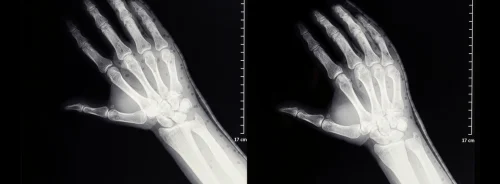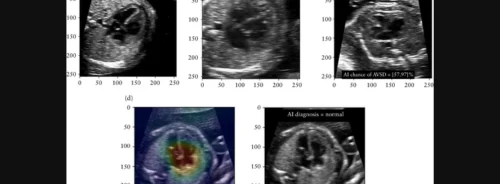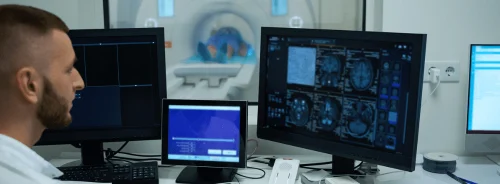HealthManagement, Volume 6 - Issue 5, 2006
Overview of Emerging Trends
Authors
Dr David Bandon
Digital Imaging Unit Head
Prof. Osman Ratib
Head of Nuclear Medicine
Dr Antoine Rosset
Radiologict
Department of Radiology
And Medical Informatics
University Hospitals of
Geneva (HUG)
Geneva, Switzerland
While mobile access to medical data and patient is becoming more widely available, accessing images still represents a technical and logistical challenge. Demand for remote image access is increasing dramatically. Solutions using wireless technology and improved performance of portable computers allow more realistic implementation of mobile alternatives than conventional imaging workstation, particularly for clinical wards and bed-side patient care. This paper reviews some emerging trends for more convenient mobile access to image data.
Moving Images Around
In clinical settings, physicians rely more and more on images and image data for patient management and clinical decisions, therefore they expect to have rapid access to digital images at the point of care. Many technical solutions are emerging as alternatives for remote access to image data.
Image Access on Portable Computers
The development of higher performance laptop and tablet computers allows more efficient management of large volumes of data with sufficient processing power for image manipulation and processing. Besides, the development of solutions based on thin-client technology allows remote laptops access to image processing and visualisation tools remotely from central servers through web-based or thin-client applications. These recent evolutions have led to more widely accepted solutions of remote image access via portable devices such as tablet PCs (see fig. 1).
The convenience and performance of these tools opens a new era of clinical applications that can benefit from the mobility of these devices through wireless technology while maintaining enough performance to be suitable for clinical requirements and management of large image data sets. Several prototypes of such implementations have been reported using web-based image viewing applications. More recently, advanced image processing and rendering tools have become accessible on portable computers due to the rapid improvement in performance of these devices.
Handheld Devices and PDAs
Numerous systems were developed to allow extracts of electronic patient records (EPRs) to be downloaded and stored in handheld devices to be readily accessible when needed. Wireless communication provides the added convenience of direct access to central data repositories and sources of on-line information. Our experience with handheld devices for displaying medical images shows that today’s handheld devices suffer from three major limitations: low display resolution, low storage capacity and relatively limited communication speed.
In an effort to explore an alternative solution that combines the convenience of a handheld device with the quality and performance of high-resolution image display systems, a project developed at UCLA explored an innovative concept for image retrieval and display in clinical wards. The system is designed to replace existing lightboxes in clinical wards with high-resolution, wall-mounted flat panel display devices driven by handheld PDA devices that can initiate the query and retrieval of specific medical images and documents from remote storage archives (see fig. 2, page 24). With the increasing size of image studies such as multi-detector CT, functional MRI, and multi modality PET/CT, the size of data tends to exceed the capacity of traditional media, and therefore, alternative solutions for convenient transportation of large image data are urgently needed.
We selected general consumer products recently released by Apple Computer for their wide availability, low cost, convenience and ease of use. We specifically adapted them for medical imaging applications. The iPod was integrated to serve as a high-capacity portable DICOM storage with high-speed transfer rate. It integrates a fast and highcapacity hard disk to store up to 40GB of data. It can be connected to any computers with a FireWire 400 (IEEE 1394) or a USB- 2 interface.
Transmission speeds of these interfaces are up to 400 and 480 Mbits/s, respectively. OsiriX software was adapted to automatically detect when an iPod is connected to the computer and automatically updates its local DICOM database to display the studies available on the iPod disk. Users can also copy image data from and to the iPod. With the recent generation of iPod photo devices, it is also now possible to display colour images on the screen.
Clinical Applications of Mobile
Technologies
In emergency rooms, there are several situations where images can be acquired directly at the bedside. Portable ultrasound as well as endoscopic devices can generate digital images to be transferred to remote consultation locations. In most cases, image transfer requires a physical connection to a network which limits smooth workflow. Also, image acquisition often needs to query the patient’s worklist before going to the patient location with the imaging device, which can mean further limitations.
Once images are acquired, the acquisition device must be physically reconnected to a network plug to transfer images to the PACS. At our hospital (HUG), we encountered recurrent problems like broken network cables disrupting communication or the need to manually reconcile images with the patient’s file when the physician failed to retrieve patient demographics before the exam. Thus, we adopted mobile technologies (MT) for image acquisition, in Spring 2006, launching a pilot with one mobile endoscopic device for urgent gastroenterology exams. Results are satisfactory with no manual reconciliation needed and, in general, less problems.
Wireless networks and mobile carts permit bedside patient data entry and provide image previews in emergency rooms and clinical wards via wireless networks. The department of paediatrics at the HUG is our pilot site for extending filmless operations outside of radiology. A user satisfaction survey showed that the vast majority of physicians would not revert to film except in specific cases for 35% who pointed out that image access in OR and clinical wards was less than optimal due to ergonomic problems. Wireless access was the non-prompted solution most often quoted. The fact that physicians spontaneously suggested wireless to improve their work environment is an important element in favour of MT. While wireless distribution to wards has been initially implemented for computerised physician order entry (CPOE), we will now include image access from laptops.
Conclusion
The main challenge to implement mobile technologies (MT) in wards is performance. Both the network and the wireless system must scale for bandwidth for the heavy traffic load. At the HUG, the first system utilised the 802.11 technology (Wifi with a bandwidth enabling 11 Mbit/s) delivering only 1 to 2 Mbit/s. A chest x-ray was available after 45 seconds, which is too slow to be used in clinical routine at the bed-side. A current upgrade to new 802.11 technology (54 Mbit/sec.), combined with the use of image quality on demand, improves performance. Encouraged by our positive experiences with MT, we will be adopting them widely to ensure adequate implementation in response to the needs of each department. We anticipate that cost efficiency studies will be required to justify the initial investment of MT. It is our conviction that MT is a natural extension to the filmless and paperless hospital and will better support physicians in their routine activities.
References for this article are available at: [email protected]





